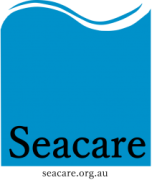2020
Type of resources
Topics
Keywords
Contact for the resource
Provided by
Years
-

An aerial survey was conducted for giant kelp (Macrocystis pyrifera) on the east coast of Tasmania from Eddystone Point to Southeast Cape. This survey represents part of a series of similar surveys, with historic aerial surveys having been conducted in 1986 and 1999. The survey was conducted via light aircraft. Areas of visable Macrocystis pyrifera beds were marked on topographical land tenure maps using landmarks as references, and complimentary photo footage was collected.
-
Data describing post-recruit (adult) fish assemblages and the abundance of recruiting cryptobenthic species associated with 28 artificial reefs of different sizes and supporting different densities of transplanted kelp (Ecklonia radiata) off the west coast of Maria island. Adult assemblages were assessed using diver-based visual surveys conducted at three times (early: spring 2015, middle: autumn: 2016, late: spring 2016). At each time, 2 surveys were conducted, and the results were averaged. Recruiting cryptobenthic fishes were assessed using SMURF (standard Monitoring Units for the Recruitment of Fishes) collectors that were deployed for a six-week period in the centre of each reef on four consecutive occasions (November 2015 to March 2016).
-
Intraspecific variation in the thermal tolerance of microscopic giant kelp (Macrocystis pyrifera) sporophytes was tested using a common garden experiment, where 49 unique family-lines were raised under four different water temperatures (12, 16, 20, and 24°C). The unique family-lines were taken from ongoing giant kelp gametophyte cultures held at IMAS, and represented F1 offspring from seven 'selfed' individuals collected from 6 sites across ~250km in Tasmania, Australia, in addition to a site-level cross from each of the sites, and a panmictic cross using the 42 pure family lines. Survivorship of the selected warm-adapted family-lines after outplanting trials at restoration sites can be found here with the associated dataset "NESP Marine Hub Project E7 outplanted kelp survivorship". https://metadata.imas.utas.edu.au/geonetwork/srv/eng/catalog.search#/metadata/908afd8c-cc7a-4ea3-a87e-4497ae8da87a
-

This record describes an aggregated data product compiled from a number of different surveys of Macrocystis surface cover in Tasmanian waters, spanning 1950 to 2019. Some surveys represent a statewide census of Macrocystis cover, while others are targeted surveys of smaller regions. Methodology and data quality may also vary between surveys. Please see linked metadata records for specific methodologies and quality statements applying to individual surveys.
-

An aerial survey of giant kelp (Macrocystis pyrifera), was carried out on the east coast of Tasmania from Musselroe Bay to Southeast Cape. This survey represents part of a series of similar surveys, with historic aerial surveys having been conducted in 1986, 1999 and 2009. This survey was conducted via light aircraft in Nov-Dec 2019, and recorded areas of visible surface canopy cover of giant kelp. Canopy areas were scribed in-flight onto 1:50,000 topographic maps (TASMAP 2017), and complimentary photo and video footage was collected. Canopy areas were digitised with reference to photo, video and map data within QGIS 3.4, and boundaries were checked against Seamap Australia seafloor habitats (Lucieer et al. 2017) and bathymetric data (Smith 2016). Each bed was attributed a broad and fine scale location, density and reliability estimate (see attached report for details). This survey was completed with funding from Pennicott Wilderness Journeys, Tassal and IMAS, and equal in-kind support by Marine Solutions and Seacare Inc.
-
This data set consists of a scored time-series of Autonomous Underwater Vehicle (AUV) images from the Bicheno region on the east coast of Tasmania. Surveys were conducted between 2011 and 2016 within the Governor Island Marine Reserve and nearby sites outside the reserve. Governor Island was surveyed in 2011, 2013, 2014 and 2016. The outside sites of Trap Reef, Cape Lodi and Butlers Point were surveyed in 2011, 2013 and 2016. Imagery across all surveys was scored for the presence of Centrostephanus rodgersii urchin barrens across rocky reef at each site. Prior to analysis the data was subsetted to every fifth image to avoid overlapping images. The data set also contains depth information for each image and a measure of rugosity (Vector Rugosity Measure) computed in ArcGIS software from a one metre resolution bathymetric map covering the survey sites. Analysis was conducted to examine the trend in the presence of barrens through time and to compare the occurrence of barrens inside the Governor Island Marine Reserve with sites outside the reserve. A spatio-temporal model incorporating both spatial and temporal correlation in the time-series of data was used. This data set contains the scored data used in the analysis. Further details of the methods used and results are contained in the following article. Please cite any use of the data or code by citing this article: Perkins NR, Hosack GR, Foster SD, Monk J, Barrett NS (2020) Monitoring the resilience of a no-take marine reserve to a range extending species using benthic imagery. PLOS ONE 15(8): e0237257. https://doi.org/10.1371/journal.pone.0237257
 TemperateReefBase Geonetwork Catalogue
TemperateReefBase Geonetwork Catalogue